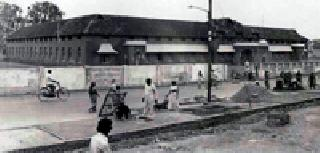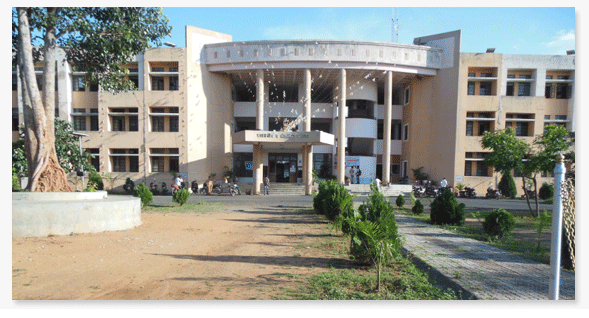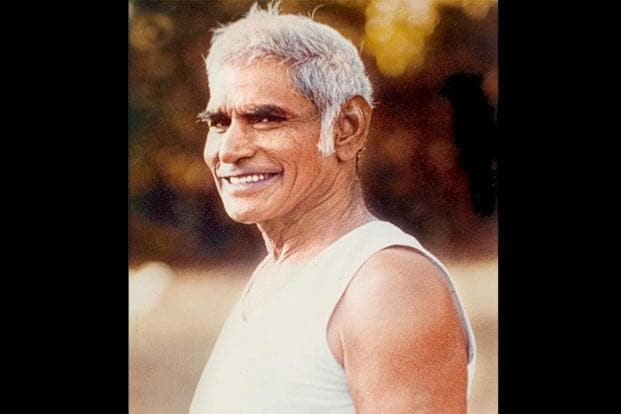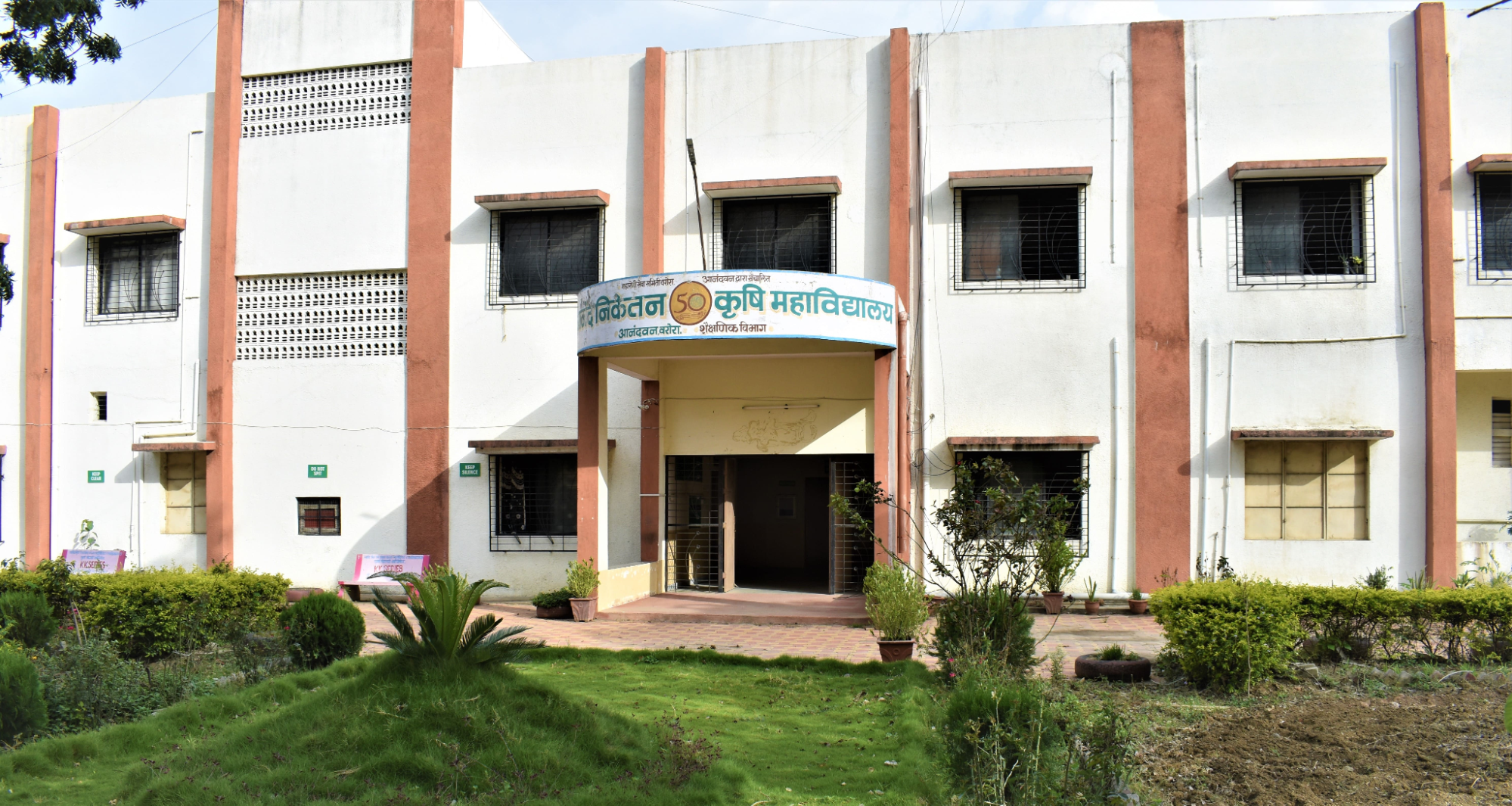Contents
- Early History
- Colonial History
- Post-Independence Era and Contemporary Educational Infrastructure
- Primary & Secondary Education
- Institutions of Higher Learning
- Dr. Ambedkar College Of Arts, Commerce And Science
- Government College of Engineering
- Prominent Figures & Organizations
- Baba Amte and Maharogi Sewa Samiti
- NGOs and Community-Based Education Efforts
- Khelo Chanda Initiative & Vivek Johnson
- Graphs
- Enrollment and Dropout Rate
- A. Student Enrollment Numbers
- B. Student Enrollment (Class-Wise)
- C. Student Enrollment (Gender-Wise)
- D. Student Enrollment (By School Management Type)
- E. Drop Out Rate (By Schooling Level)
- F. Drop Out Rate (By Gender)
- Schools
- A. No. of Schools
- B. No. of Schools (Filtered by Gender Mix)
- C. No. of Schools (By School Management Type)
- Teachers
- A. No. of Teachers
- B. No. of Teachers (By School Management Type)
- C. No. of Teachers (Male vs Female)
- D. Education Level of Teachers
- Sources
CHANDRAPUR
Education
Last updated on 28 July 2025. Help us improve the information on this page by clicking on suggest edits or writing to us.
The educational framework of Chandrapur aligns with the broader structure of the Indian education system, encompassing pre-primary, primary, secondary, and higher education. By the 19th century, the introduction of the Western education framework in the district changed its educational landscape. British administrators and missionaries became actively involved in shaping education in the region.
Still, even as colonial influences grew, the early 20th century saw a wave of local initiatives; its existence indicated an increasing public awareness regarding the importance of education. Local communities took charge of education, a movement that carried into the post-independence era, shaping the district’s educational landscape in lasting ways.
Early History
The documented history of education in Chandrapur can be traced back to the 19th century. Prior to this era, information about educational centers in the district was sparse due to limited historical records. However, this does not imply that formal education was completely absent in the district. According to the district Gazetteer (1972), “education system in early times existing among both Hindus and Muhammedans, was in each case, closely connected with their religious institutions.”
In the past, centers of learning emerged in areas with significant high-caste populations, where pandits taught subjects such as Sanskrit grammar, logic, philosophy, and law. Students, called chelas, lived with their gurus.
In Muslim communities, it is noted that higher education was provided by scholars teaching at schools attached to mosques, with subjects including grammar, rhetoric, theology, and science. Over time, madrasas were established by religious benefactors. Basic education for Muslim children typically took place at home, with wealthier families employing private tutors for reading, writing, and arithmetic, often in Persian. Teachers were highly respected, and students were subject to strict discipline. This indicates that some systems of education did exist in the district in earlier times.
Colonial History
The evolution of education in Chandrapur during the colonial period was shaped by a combination of administrative restructuring, missionary involvement, and local engagement. The British assumed control of Chandrapur in 1818 following the collapse of the Maratha Empire. In the latter half of the 19th century, Major Lucie Smith, who served as Settlement Officer from 1866 to 1869, introduced a series of administrative and social reforms. These included systematic surveys and the early introduction of the British education system. The establishment of the Chandrapur Municipal Corporation in 1867 provided an institutional base for such reforms.
The conditions prevailing with regards to education appear to have been very favourable in the district. Interestingly, it is mentioned in the colonial district Gazetteer (1909) that “Chanda has always been regarded as the chief seat of learning in the Nagpur country.” This could point to both its prominence during and before colonial rule. It also notes that government schools established during the 1870s “made a very satisfactory progress.”
The Chanda Zila School was described in the Gazetteer (1909) as “very considerably the best and most advanced school of its class.” Perhaps based on its performance and demands from the locals, the district was selected as one of three proposed locations for a new high school in the Central Provinces. A high school was officially opened in October 1868, however, its run came to a close due to social issues. It is noted that the admission of a few Dher (Scheduled Caste) boys who had qualified for entry led to a mass withdrawal of students and teachers from the upper castes.
It was not until 1898 that a private high school was established, remarkably, by local figures. In 1906, this school was formally taken over by the Government.

In 1885, notably, a local school committee was established, led by figures such as Asarambapu Kotpalliwar, Ganpatrao Jayram, and Narayan Vithal. This committee played a crucial role in expanding the educational framework. Initially, the focus was on basic subjects; however, over time, the curriculum evolved to include a broader range of subjects, such as physics, history, drawing, sanitation, and agriculture.
By 1907–08, Chandrapur had developed a modest but diverse educational infrastructure. According to the Gazetteer, the district supported:
- 1 second-grade middle school
- 6 regional language middle schools
- 99 primary boys’ schools
- 5 aided mission boys' schools
- 4 unaided boys' schools
- 8 Government girls' schools
- 1 Local Fund girls' school
- 2 aided mission girls' schools
In total, the district had 136 schools, of which “9 are maintained by the Government, 107 by the District Council and 9 by the municipalities.” The remaining 11 were privately run.
The district’s student population also saw notable changes. In 1897–98, 131 schools had 7,245 enrolled students. This number dipped during the famine of 1899–1900 to 100 schools and 5,668 students but recovered thereafter. By 1906–07, there were 133 schools with 8,364 students, of whom 897 were receiving secondary and 7,467 primary education.
Post-Independence Era and Contemporary Educational Infrastructure
Following India's independence, the education system in the district underwent major transformations, driven by both state policies and local leadership. The introduction of structured education levels—pre-primary, primary, secondary, and higher education—along with the implementation of National Education Policies, heavily shaped Chandrapur’s educational landscape. Over the years, the sector expanded with contributions from both government-funded institutions and private organizations. Additionally, the introduction of various educational boards, each offering distinct curricula and standards, provided students with more choices and opportunities.
Primary & Secondary Education
During the colonial period, both public and private efforts in education primarily focused on primary and secondary schooling, as indicated by data from district gazetteers across Maharashtra. Higher education remained underdeveloped in most districts, including Chandrapur, with gradual improvements over time. While basic infrastructure for primary and secondary education existed, its expansion was closely tied to increasing enrollment and greater involvement of local figures.

Today, this expansion is evident in the widespread presence of schools across various wards of Chandrapur, with available data reflecting the steady growth of educational institutions in both urban and rural parts of the district.
Institutions of Higher Learning
Perhaps one of the most notable changes in Chandrapur’s educational landscape is tied to the establishment of higher education institutions. While primary and secondary schooling expanded steadily, opportunities for advanced education remained limited for much of the district’s history. Over time, local leaders and organizations played a crucial role in addressing this gap, leading to the creation of several colleges. As a result, many institutions in the district today are privately managed, semi-private, or autonomous.
Dr. Ambedkar College Of Arts, Commerce And Science
Dr. Ambedkar College of Arts, Commerce, and Science was established in 1970 by the Dr. Babasaheb Ambedkar Memorial Society in Chandrapur. It is affiliated with Rashtrasant Tukadoji Maharaj Nagpur University (RTMNU) and has developed into a center of excellence that addresses the industrial requirements and socio-economic needs of the Vidarbha region.
Government College of Engineering
The Government College of Engineering, founded in 1996, is another key institution in Chandrapur. As the only government engineering college in the area, it plays a vital role in providing high-quality technical education and is affiliated with Gondwana University, Gadchiroli. Funded entirely by the Government of Maharashtra, the college offers various engineering disciplines, including Instrumentation, Mechanical, Computer Science, Civil, and Electronics and Telecommunication Engineering. Additionally, the college features departments for Science and Humanities.


In addition to these institutions, a number of centres for higher education operate throughout the district, which offer programmes across various disciplines. While the landscape of higher education has broadened significantly since independence, disparities in access, particularly along geographic lines, remain evident.
Prominent Figures & Organizations
Baba Amte and Maharogi Sewa Samiti
One of the most notable figures associated with social reform in the district is Baba Amte (Murlidhar Devidas Amte). In 1949, he established the Maharogi Sewa Samiti at Warora in Chandrapur district, with the aim of providing treatment, rehabilitation, and livelihood opportunities to persons affected by leprosy. The centre came to be known as Anandwan.

As part of the wider work of the Samiti, a number of educational and training institutions were founded in Anandwan. Among them is the Anand Niketan College of Agriculture, established in 1965 to offer instruction, research, and extension education in agricultural sciences. It continues to operate under the management of the Maharogi Sewa Samiti.

NGOs and Community-Based Education Efforts
Education has been a key driver of social reform, particularly in addressing inequality and expanding access to learning. While formal institutions provide structured education, many communities continue to face barriers due to poverty, social stigma, or lack of resources. To address these challenges, various organizations in Chandrapur have focused on community-based education initiatives, with each working to tackle specific social challenges present in the district.
Khelo Chanda Initiative & Vivek Johnson
One such initiative has been led by IAS officer Vivek Johnson, who introduced new approaches to learning after recognizing that traditional education methods and pedagogies were failing to engage students in rural areas in classroom settings.
As part of this effort, open science parks have been established across the district. According to a Indian Masterminds report (2024), 15 STEM parks had been established by that year, with plans underway for an additional 55. These facilities provide hands-on science education outside the classroom environment and are designed to serve multiple schools in the vicinity.
In addition to science education, the “Khelo Chanda” initiative was introduced to encourage sports and physical development. The programme has set up 85 sports complexes across the district, with a particular focus on encouraging participation from girls and young women.
Graphs
Enrollment and Dropout Rate
Schools
Teachers
Sources
Anandwan Library. “About Us.” Anandwan Central Library.https://ancalib.in/about/
Disha Group. “About Us.” Disha Group.https://www.dishagroup.in/
Gazetteer of India. 1972. Maharashtra State Gazetteer: Chandrapur District. Directorate of Government Printing, Stationary & Publications, Government of Maharashtra, Mumbai.
Government College of Engineering, Chandrapur. \“About GCOEC.”https://www.gcoec.ac.in/gcoec/
Mrunali Wasake, P.S Mahore. 2024. “Commencement of British Education System in India and Its Dissemination in Chandrapur Municipal Corporation.” Educational Administration Theory and Practice journalvol 30, no 1.10.53555/kuey.v30i1.6828http://dx.doi.org/10.53555/kuey.v30i1.6828
Pallavi Priya. 2024. “Igniting a Scientific Temper in the Tribal Youth of Chandrapur."https://indianmasterminds.com/features/beyon…
Russel V. ed. 1905. Central Provinces District Gazetteers: Chanda District. Pioneer Press, Allahabad.
Wikipedia Contributors. Baba Amte. Wikipedia.https://en.wikipedia.org/wiki/Baba_Amte
Last updated on 28 July 2025. Help us improve the information on this page by clicking on suggest edits or writing to us.